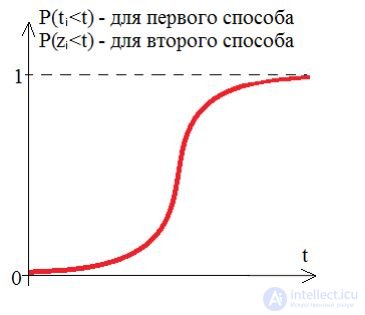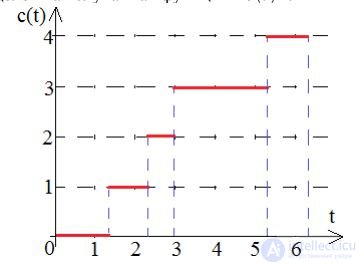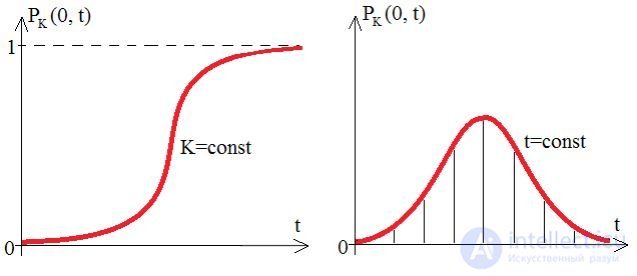Lecture
Call flow is a sequence of homogeneous actions that occur at certain intervals of time. Streams are divided into deterministic and random. If time intervals are strictly defined, known in advance, then the call flow is called deterministic, from the Latin determinave - to determine, condition. Deterministic flow is uniquely determined and set by the sequence of the moments of the onset of calls (for example - the departure of trains on a schedule).

Where tn (n = 1,2, ...) is the moment when the nth call occurs. An example of a deterministic call flow is communication sessions with a spacecraft, the start times and the duration of which are determined by the program on the ground. In practice, are rare. In communication networks, as a rule, one has to deal with random flows. A random call flow is a flow in which events occur at random intervals. There are 3 ways to define and set random streams.
1 way - the moments of the onset of calls:
Let: t 1, t 2, ..., ti, ... are random moments of incoming calls; c1, c2, ..., ci, ... is the number of calls received at these moments; Then the flow can be defined as a sequence of vectors.

If only one call can be received at a time, in this case the flow will be determined by the arrival of calls. Because
the probability of a call arriving at a specific given time is always zero, then the flow is determined by the law of distribution of moments
incoming calls P (ti <t).

2 way - the intervals between the arrival of calls:
Let z 1 = t1−0; zi = t i − t i − 1 for i⩾1, where z 1, z 2, ..., zi, ... are the intervals between the onset of calls.

In this case, the flow can be defined as a sequence of vectors c1⋅z1, c2⋅z 2, ..., ci⋅zi, ....
The flow is determined by the law of the distribution of the intervals between the arrival of calls P (zi <t).
3 way - the number of calls on the time interval:
Let c (t) be the number of calls received by the service system during the time [0, t), not including the time t.
In this case, the stream can be defined as a random function c (t).

For example, the flow is defined by the distribution law of the integer function c (t).
P [c (t) = K] = Pk (0, t) is the probability of receiving K calls in the interval [0, t).
All 3 ways of defining and defining a call flow are equivalent.

Comments
To leave a comment
Teletraffic Theory
Terms: Teletraffic Theory